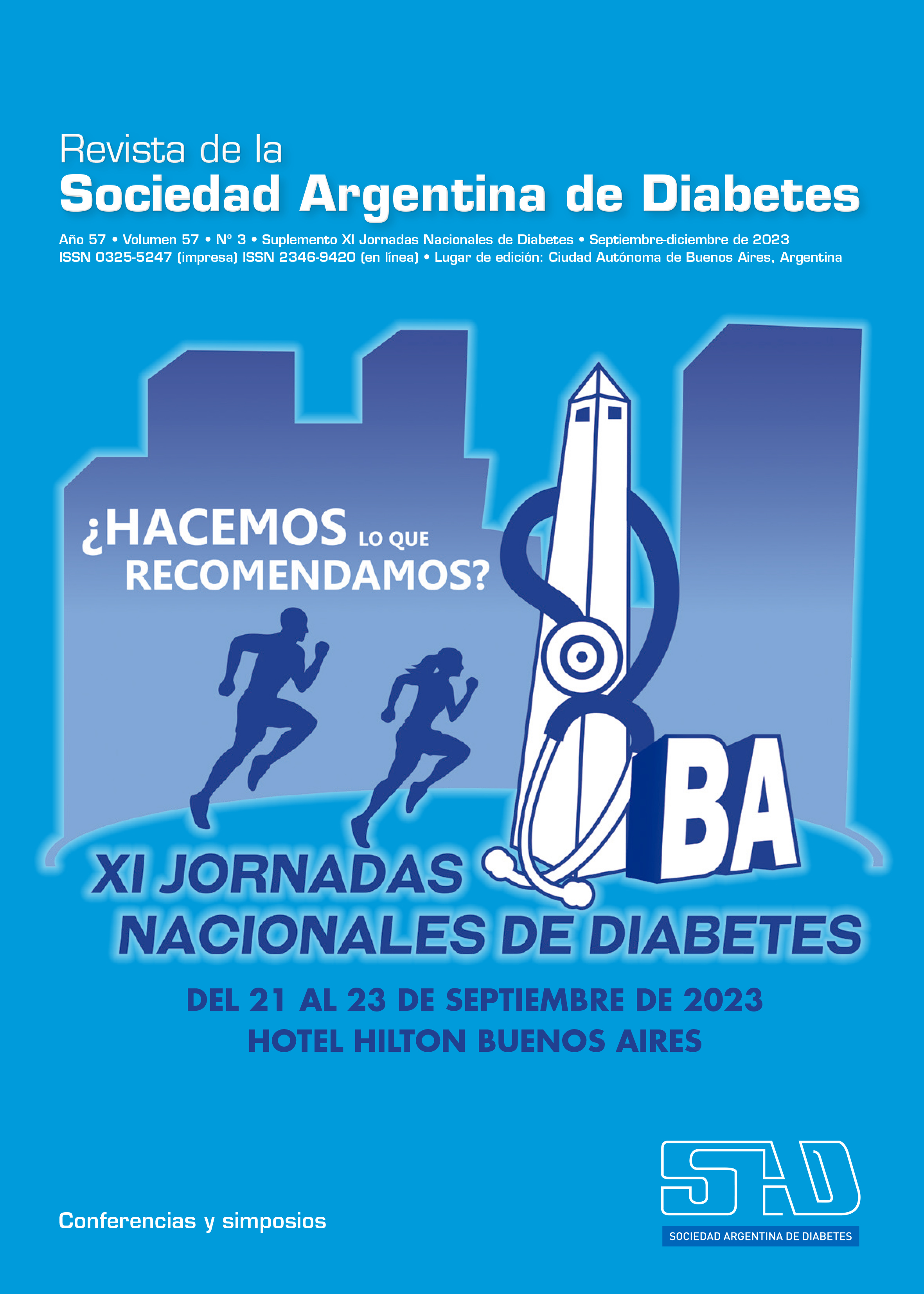Post-stroke rehabilitation
DOI:
https://doi.org/10.47196/diab.v57i3Sup.684Keywords:
rehabilitation, cerebrovascular accidentAbstract
It is estimated that at least two thirds of patients who have suffered a cerebrovascular accident (CVA) present sequelae that will affect their independence, their quality of life and will require rehabilitation, which will include: the attention of a multidisciplinary team made up of doctors, kinesiologists, speech therapists, occupational therapists, nutritionists, psychologists, nurses, also involving the patient and their caregivers in a progressive and dynamic rehabilitation program.
The objective is to try to achieve the greatest possible degree of recovery of their physical, cognitive, emotional, social and functional state.
Within the multidisciplinary team, kinesiology or physical therapy intervenes in the care of motor deficits that occur, in their various degrees of complexity.
Physical therapy should be started as soon as possible as long as the patient is stable and receives the medical indication in the Stroke Unit.
For each deficit there is a series of tests and scales that allow an objective evaluation of the patient's situation and its evolutionary changes. Functional assessment scales are instruments that allow us to express the results in an objective and quantifiable way. They must be valid, practical, simple and standardized.
In Kinesiology for stroke patients we use different evaluations such as the Berg Balance Scale, Mini Best Test, goniometry, Fugl Meyer, FAC, SOT, 6-minute test and 10-meter test as an example. Each one evaluates different deficits (motor skills, mobility, functionality, balance, strength, gait).
In the evolution of the patient with stroke we divide it into an acute stage (in hospital) in which kinesiotherapy is started once the clinical (hemodynamic and systemic) stability of the patient is achieved. In this stage, the first evaluations are carried out and the treatment seeks to prevent skin lesions and respiratory complications, prevent vicious attitudes and injuries to the upper and lower limbs, passive/assisted mobilizations, teaching transfers and motorization, stimulation of balance in a seated position. , always according to the capacity of the patient. We also found perceptual-sensory deficits that determine disorders in the body schema and posture.
In addition, in the acute stage, and by protocol, all patients receive an evaluation and/or screening to detect dysphagia and determine if it is possible to start an oral diet and under what characteristics and care. At this stage, a large number of patients present some sign of dysphagia that most recover in the short and/or medium term.
Then we find the second subacute and chronic post-hospital stage that will be carried out with the patient admitted to a rehabilitation center, or under the day hospital mode, outpatient therapy or home care depending on the case and different factors, which lead the physiatrist to determine the place and mode of the various therapies.
At this stage, it is necessary to use the evaluation scales initially and periodically to quantify the evolution of recovery and determine which specific aspects treatment should focus on.
As general lines, we work on the motor rehabilitation of upper limbs through various manual and physiotherapy (FES) techniques, seeking the stimulation of voluntary movement and the prevention of shoulder injuries and flexion contractures of the joints due to spasticity.
Motor rehabilitation of the lower limbs and gait, balance rehabilitation, fall prevention, somatosensory stimulation and selection of the necessary equipment, be it splints for the upper and lower limbs, a walking aid or a wheelchair.
For these objectives, there are numerous kinesic techniques and technological equipment that, applied in an intensive-repetitive manner, manage to improve the functionality and independence of patients.
The functional evaluation and test scales will give us objective information on the degrees of recovery in the various sensory-motor functions. It is also important to note that some of the observed recovery is attributed to the effects of neuroplasticity.
Among the factors that influence the success or the best prognosis of kinesic therapy and reduction of motor sequelae are considered: age, sex, lesion site, initial motor deterioration, motor evoked potentials, somatosensory evoked potentials, of which the initial motor impairment is the most influential and marks the patient's prognosis.
Although the objectives of each specialty point to specific purposes such as the mobility of the affected members, balance, independent walking as in the case of Kinesiology, the general objective of all areas points to the return to functional independence as much as possible, to activities of daily living, labor and social reinsertion.
References
I. Polloch A, Baer G. Physical rehabilitation approaches for the recovery of function and mobility following stroke. Cochrane Database Syst Rev 2014;(4):CD001920.
II. Veerbeek JM, van Wegen E. What is the evidence for physical therapy poststroke? A sistematic review and meta-analysis.PLos One 2014;9(2):e87987.
Downloads
Published
Issue
Section
License
Copyright (c) 2023 on behalf of the authors. Reproduction rights: Argentine Diabetes Society

This work is licensed under a Creative Commons Attribution-NonCommercial-NoDerivatives 4.0 International License.
Dirección Nacional de Derecho de Autor, Exp. N° 5.333.129. Instituto Nacional de la Propiedad Industrial, Marca «Revista de la Sociedad Argentina de Diabetes - Asociación Civil» N° de concesión 2.605.405 y N° de disposición 1.404/13.
La Revista de la SAD está licenciada bajo Licencia Creative Commons Atribución – No Comercial – Sin Obra Derivada 4.0 Internacional.
Por otra parte, la Revista SAD permite que los autores mantengan los derechos de autor sin restricciones.




























